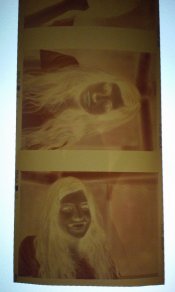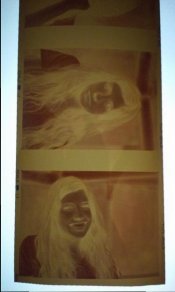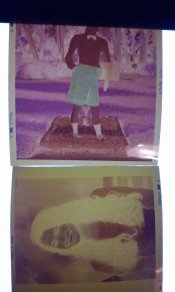The other night I finally took the dive into DIY C-41 developing, using the Unicolor kit. All things considered, I'm pretty pleased, albeit, the results are pretty bad. I shot an expired roll of Reala at 100 ASA as a test. I really didn't want to use a fresh roll as my developing test roll, but based on the results, I think I should have. I'm hoping you guys with experience (a lot or a little) can help me figure out why my results were poor.
The things I did right;
Temp was at 102.7°F at the start, and 102.1°F when I finished, so my temps were spot on. I did this in a water filled tub in the shower, so I'm pretty happy.
Agitation was 4 inversions (Paterson tank) every 30 secs, and I was extraordinarily consistent with it.
No cross-contamination of chemicals. Each of the 3 chemicals had their own measuring cups, mixing vessels, mixing spoons (wire whisks), and storage containers (all new).
What I did not so great;
Used long expired (1994) film
I didn't take the pour in and pour out times into consideration, so I think I overdeveloped? ie, I started the 3:30 developer time after I poured the developer in, and didn't pour it out until the 3:30 was completed.
The negatives themselves really don't have any "color" variation to them. You can see that in the attached. They almost look like B&W negatives, but once scanned, there is color. When I compare these to another roll from the same batch, the base of the negs I developed is much darker then the lab developed negatives. I assume this is because of my screw up on the pour times? How much of the below problems would this account for?
You can see the scan (without any adjustments) is very flat, somewhat faded looking, and have a definite green color cast. Would this be more likely due to the film being old, or related more to the developing time (or something else in the developing process)?
And lastly, the third image is with some enhancements, to show the left and right edges that have a lighter, bluish cast to them. Could this also be due to something in the developing process, or is it more likely light leakage from the camera. Camera was a Mamiya M645 that I hadn't used before, but the light seals are newer, not gummy, and complete. I'll be running another test roll of B&W through the camera, but until that's shot and developed, I turn to your guesses.
Negative(s) on laptop white screen;

Uncorrected scan;

Semi-corrected scan with left & right edge issues;

The things I did right;
Temp was at 102.7°F at the start, and 102.1°F when I finished, so my temps were spot on. I did this in a water filled tub in the shower, so I'm pretty happy.
Agitation was 4 inversions (Paterson tank) every 30 secs, and I was extraordinarily consistent with it.
No cross-contamination of chemicals. Each of the 3 chemicals had their own measuring cups, mixing vessels, mixing spoons (wire whisks), and storage containers (all new).
What I did not so great;
Used long expired (1994) film
I didn't take the pour in and pour out times into consideration, so I think I overdeveloped? ie, I started the 3:30 developer time after I poured the developer in, and didn't pour it out until the 3:30 was completed.
The negatives themselves really don't have any "color" variation to them. You can see that in the attached. They almost look like B&W negatives, but once scanned, there is color. When I compare these to another roll from the same batch, the base of the negs I developed is much darker then the lab developed negatives. I assume this is because of my screw up on the pour times? How much of the below problems would this account for?
You can see the scan (without any adjustments) is very flat, somewhat faded looking, and have a definite green color cast. Would this be more likely due to the film being old, or related more to the developing time (or something else in the developing process)?
And lastly, the third image is with some enhancements, to show the left and right edges that have a lighter, bluish cast to them. Could this also be due to something in the developing process, or is it more likely light leakage from the camera. Camera was a Mamiya M645 that I hadn't used before, but the light seals are newer, not gummy, and complete. I'll be running another test roll of B&W through the camera, but until that's shot and developed, I turn to your guesses.
Negative(s) on laptop white screen;
Uncorrected scan;
Semi-corrected scan with left & right edge issues;
















